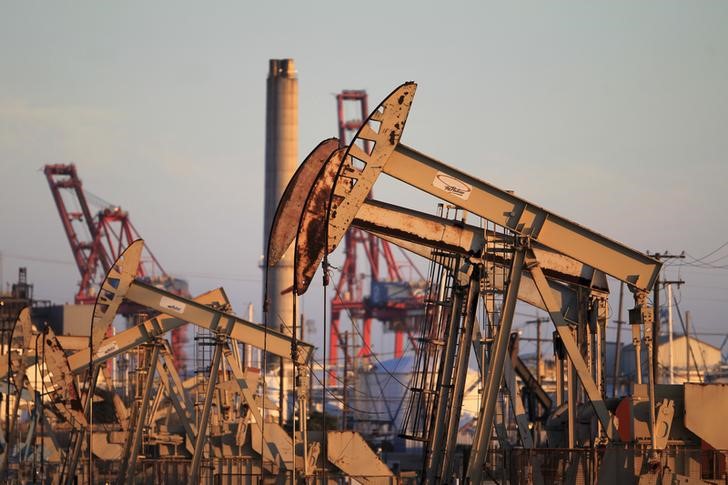Investing.com - Crude oil prices were mixed in Asia on Wednesday with investors mulling industry estimates on U.S. inventories of crude and refined products as they wait for official figures.
On the New York Mercantile Exchange crude futures for October delivery rose 0.08% to $48.27 a barrel, while on London's Intercontinental Exchange, Brent was last quoted down 0.28% to $54.12 a barrel.
U.S. crude oil stocks rose by 6.18 million barrels at the end of last week, the American Petroleum Institute said on Tuesday, more than the 2.5 million gain expected.
It was the second straight build after Hurricane Harvey shut production in some Gulf of Mexico fields and refineries in Texas as some domestic producers also trimmed output to avoid a larger glut at storage. The oil storage hub at Cushing, Oklahoma, saw a build of 1.32 million barrels.
However, gasoline supplies dropped 7.90 million barrels and distillates fell by 1.81 million barrels as key refineries in Houston and Corpus Christi were offline. The Energy Information Administration will release official data on Wednesday.
There is often a wide divergence bwteeen the API and EIA figures.
Overnight, crude oil prices settled higher on Tuesday after a report showed Opec output fell in August but gains were capped as investors braced for U.S. crude inventory due data expected to show a large build in stockpiles.
In its monthly oil market report the Opec said production in August fell by 79,000 barrels a day (bpd) to 32.76 million as falling production from Venezuela, Iraq, the UAE and Saudi Arabia offset rising output from Nigeria.
Global oil demand growth is forecast to increase by 1.35m bpd to 98.12m bpd, representing an uptick of 70,000 bpd from the previous report.
Opec’s secretary-general Mohammad Barkindo said “It is clear the rebalancing process is under way,” and expressed optimism that growing demand in the second of the half of year would continue to dent excess supplies.
The reported also highlighted a dip in non-Opec output, after several refineries along the Gulf Coast shut down as Hurricane Harvey tore through the U.S. oil heartland of Texas in August.
